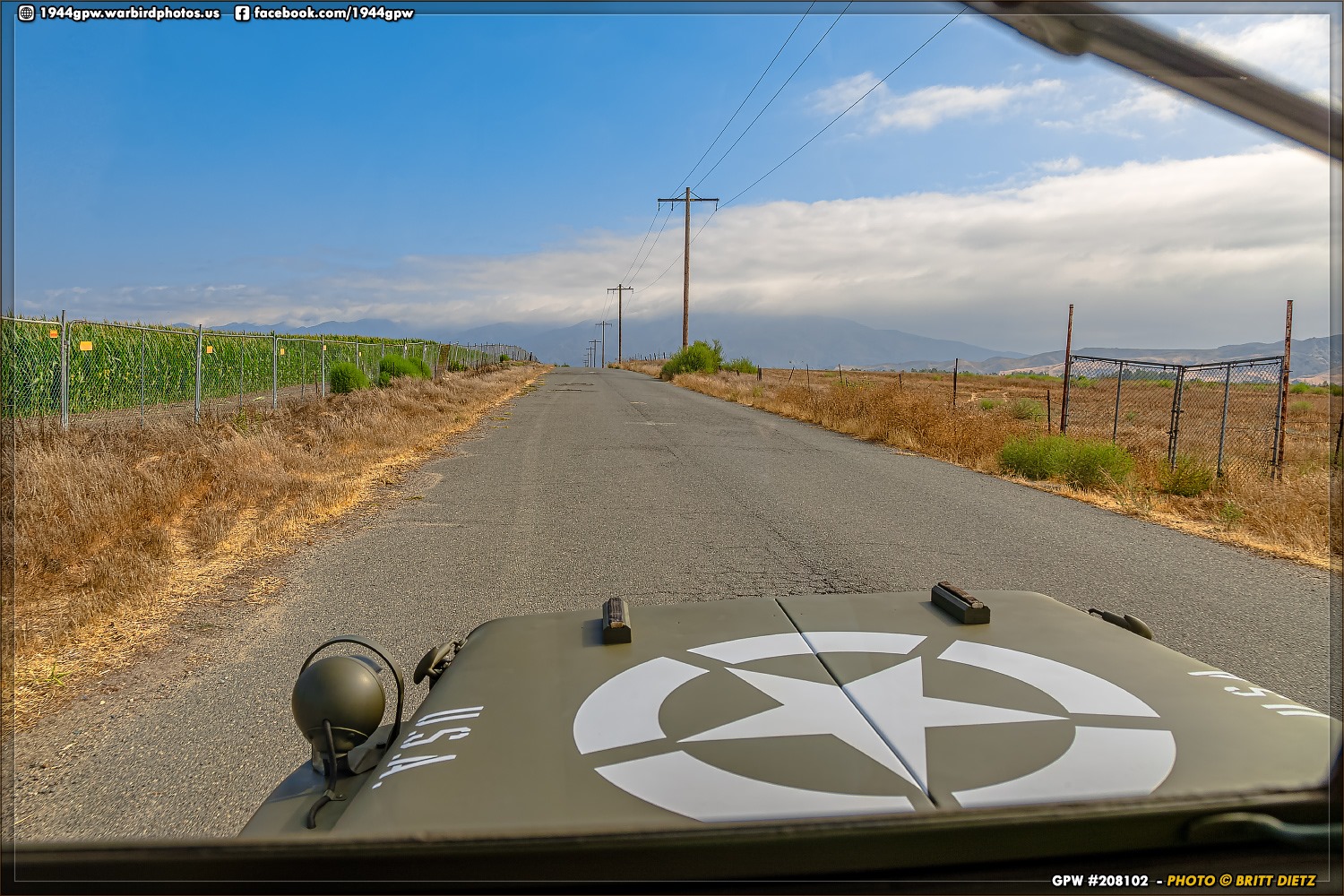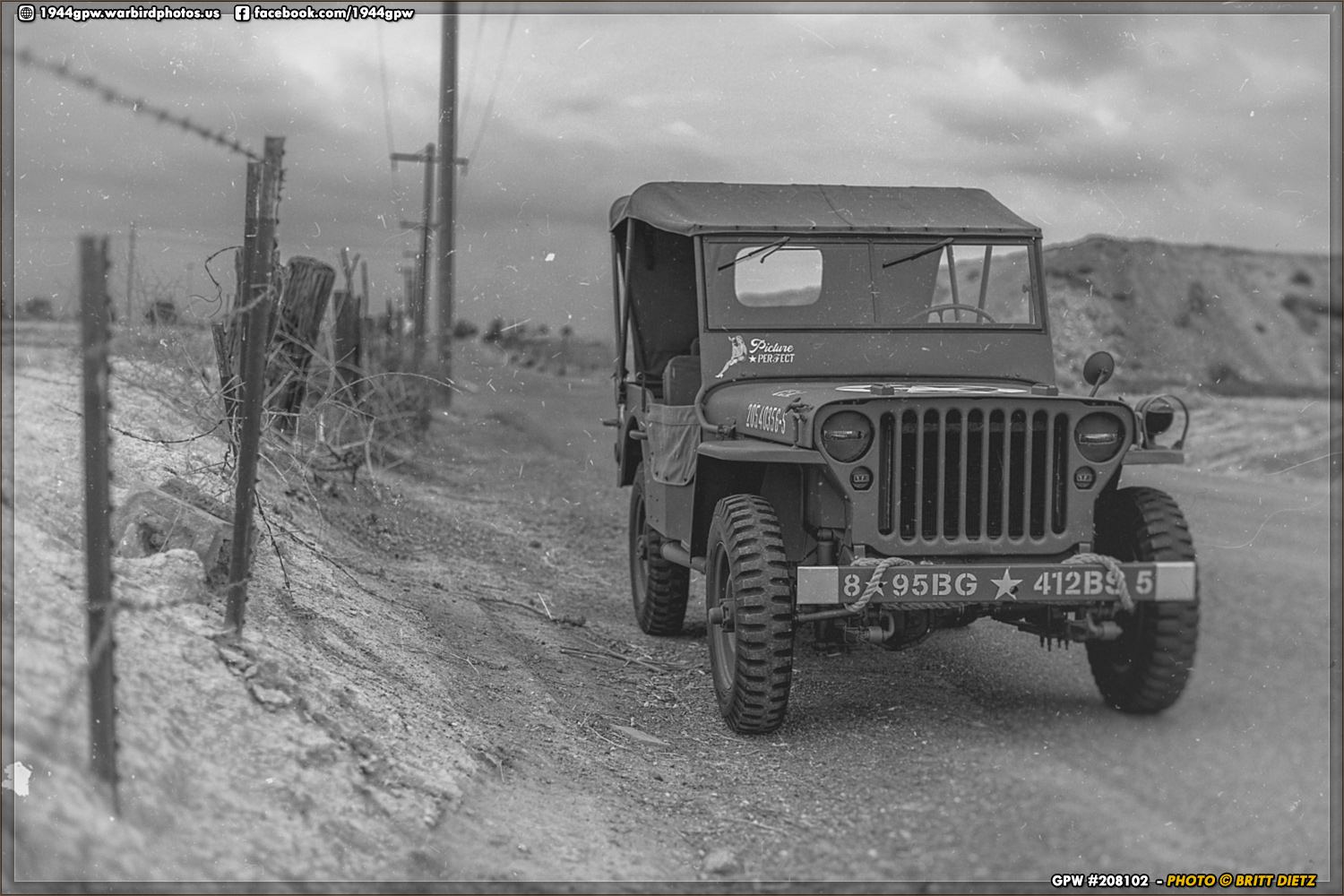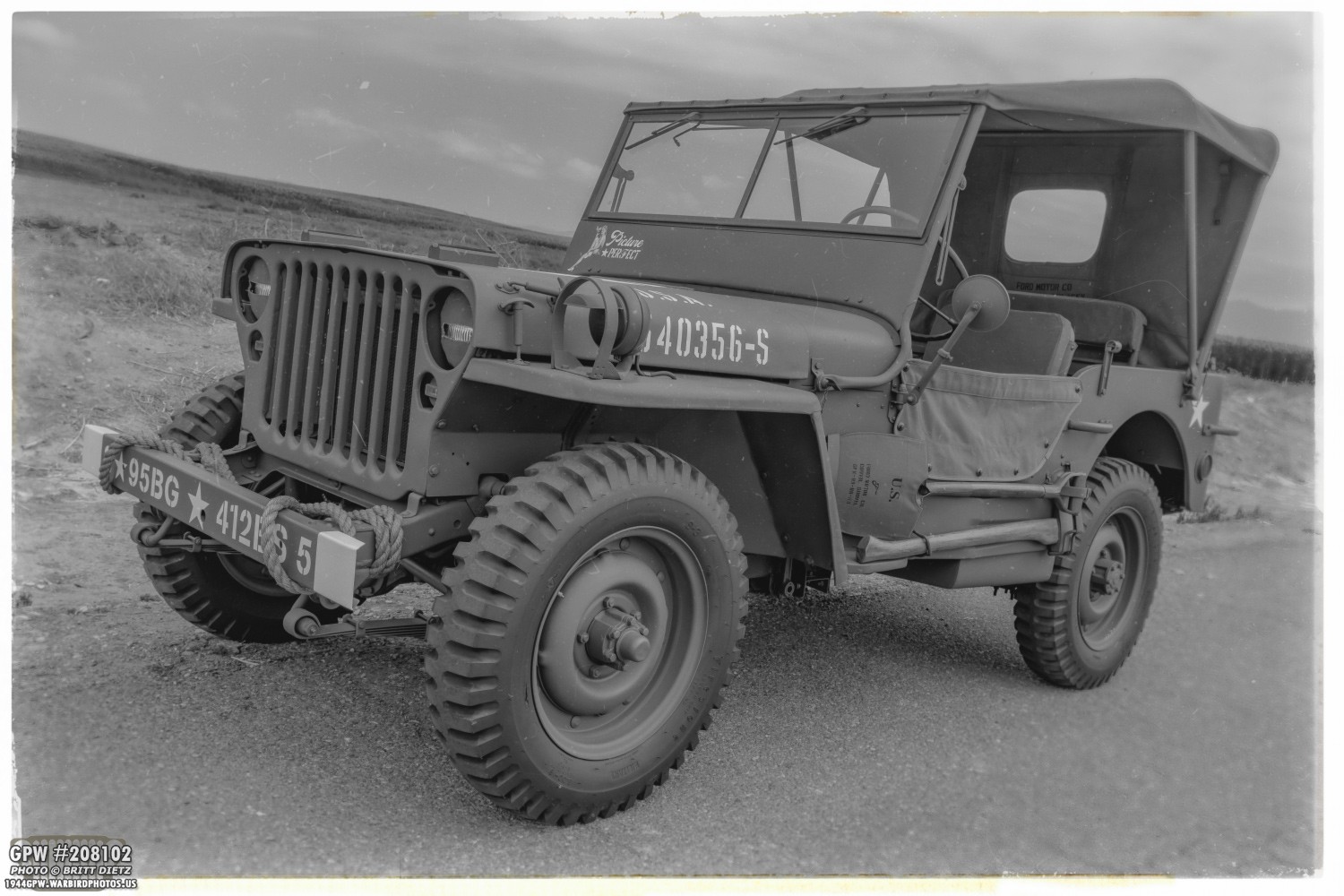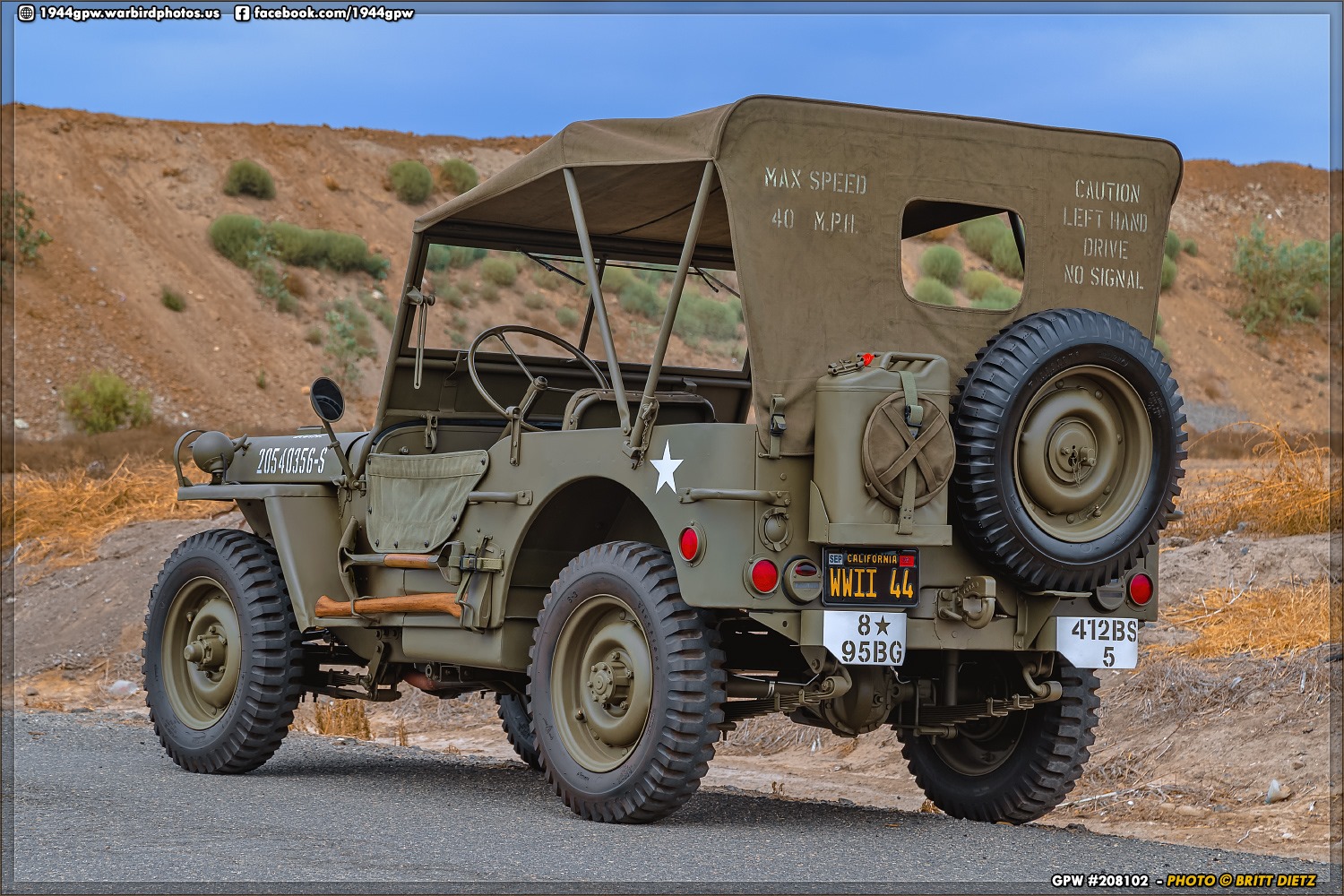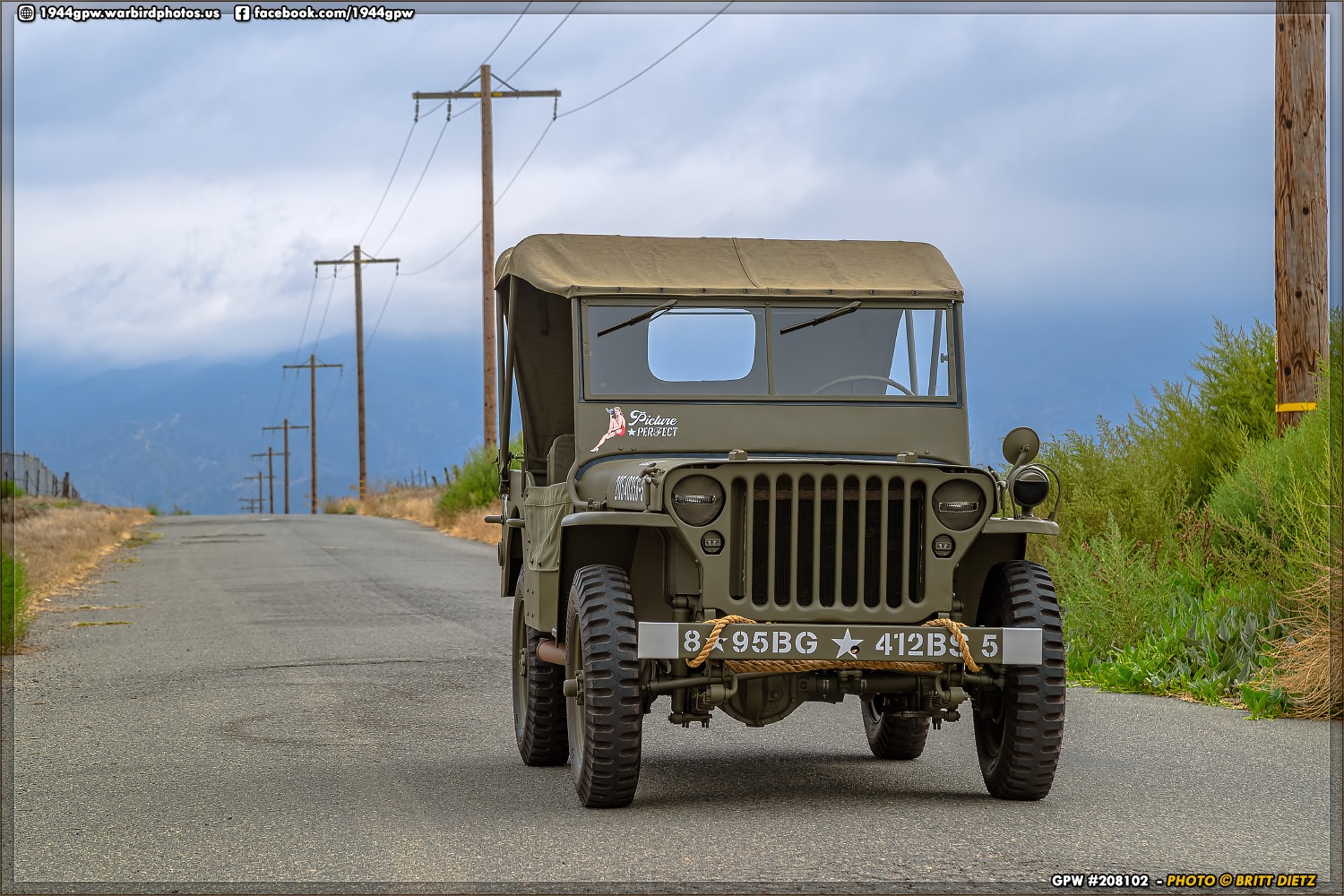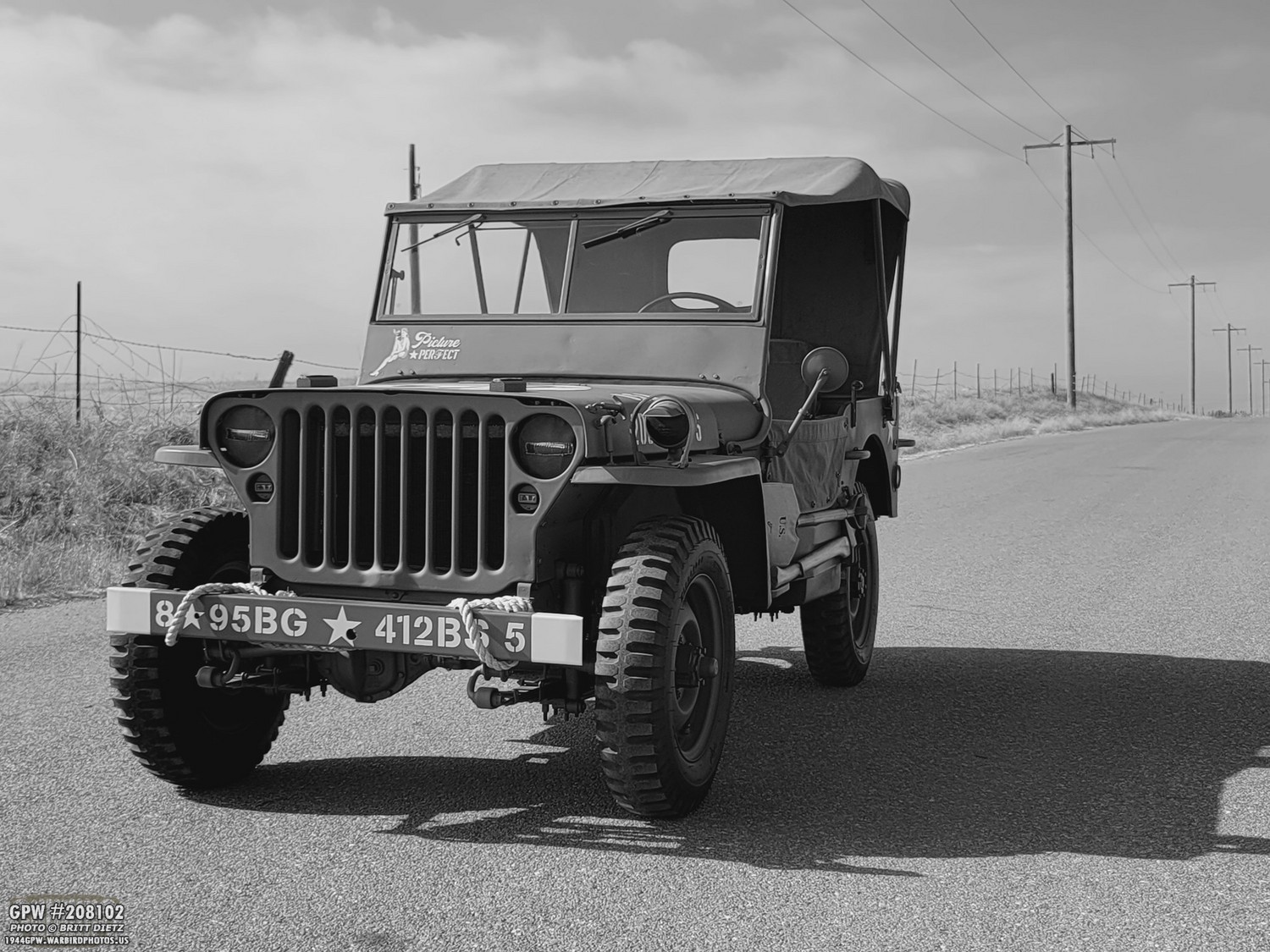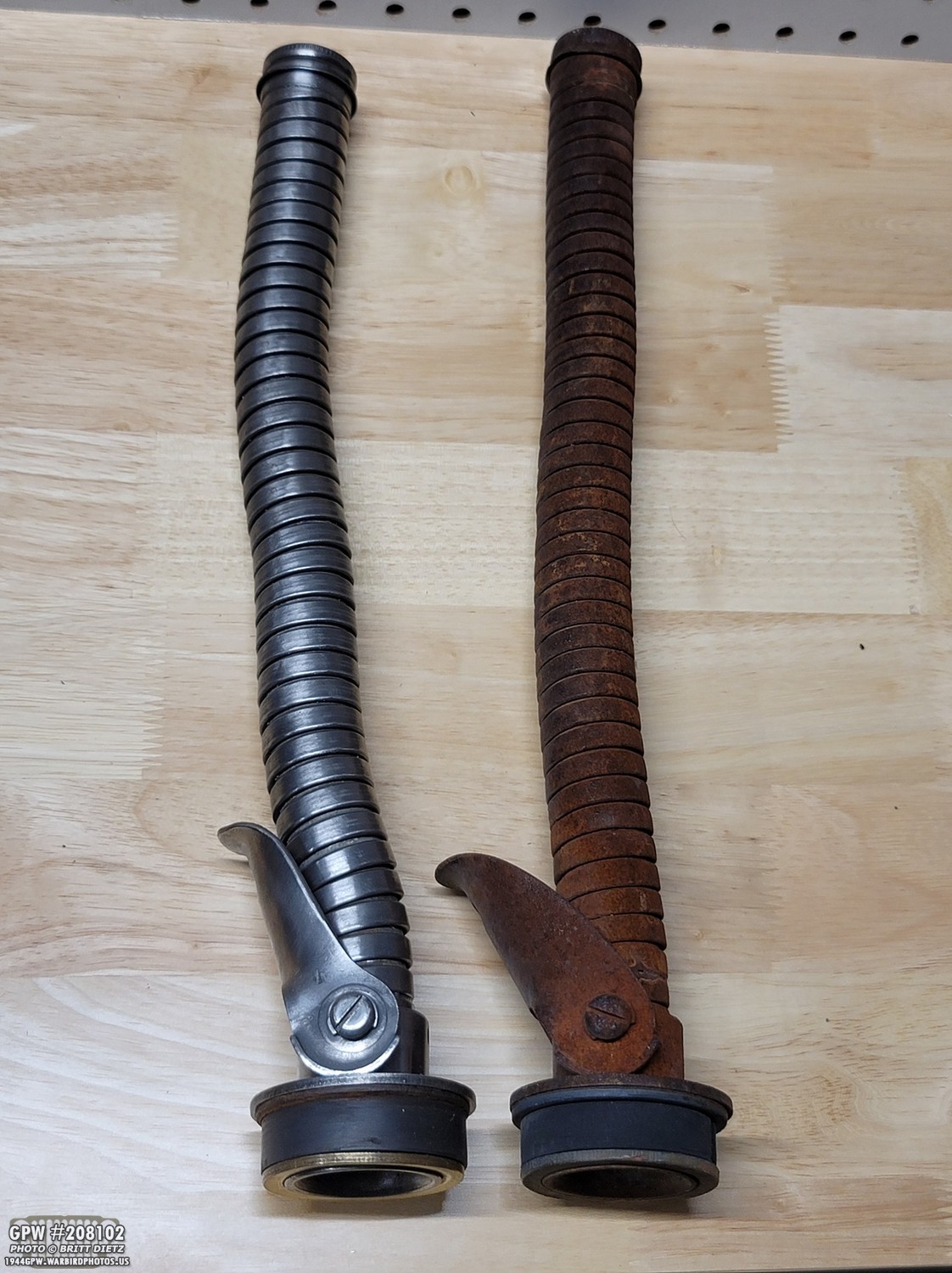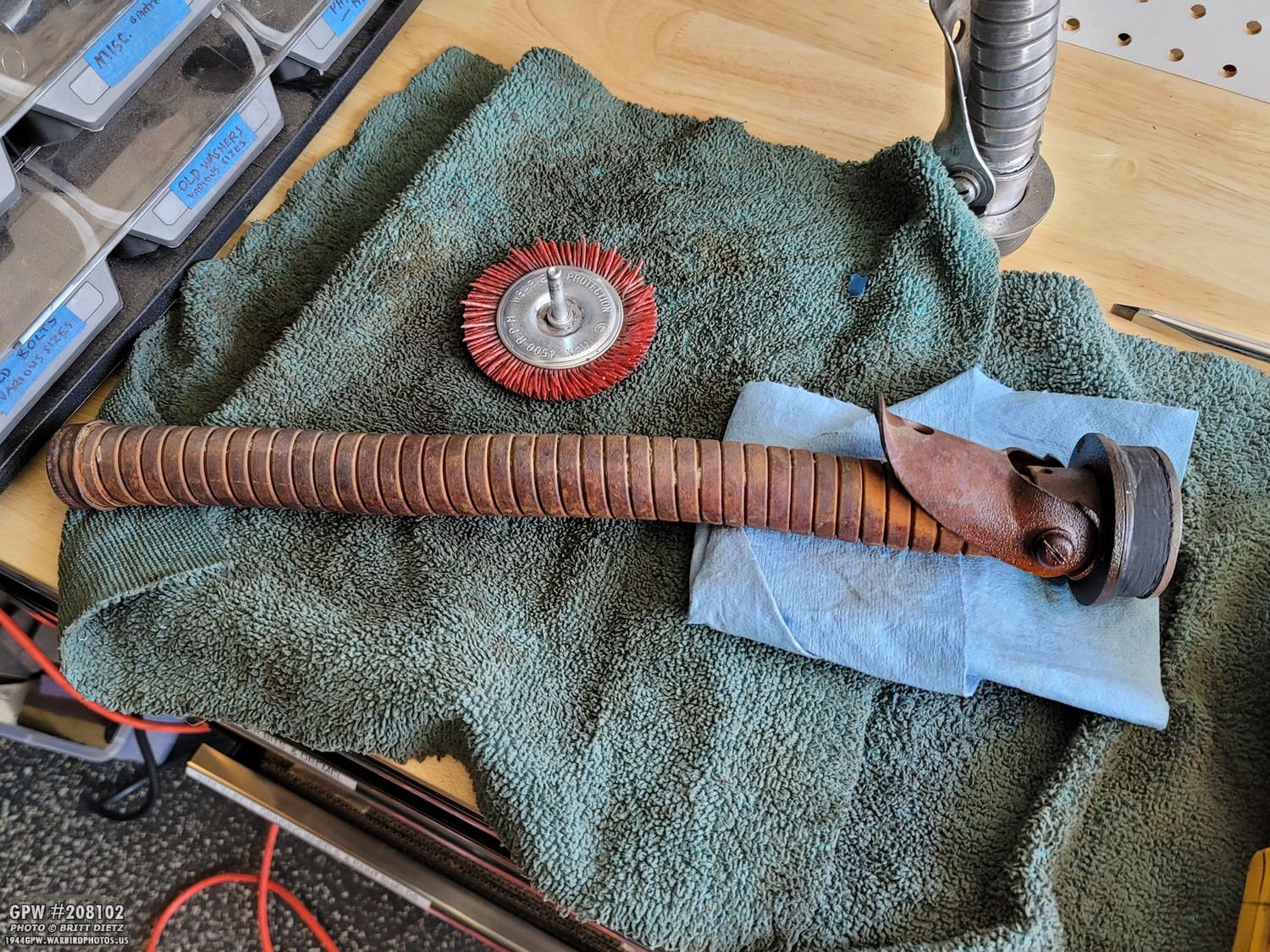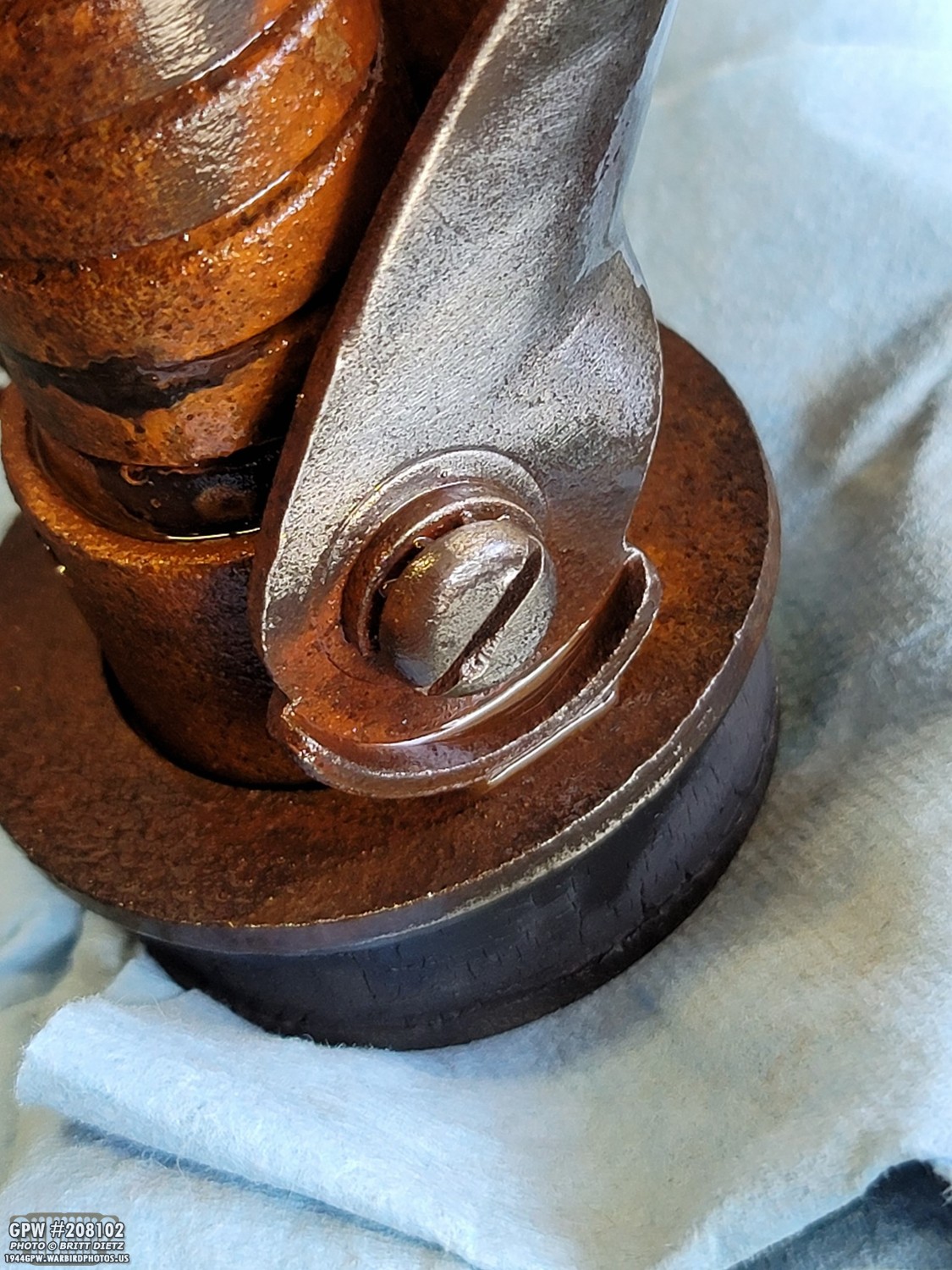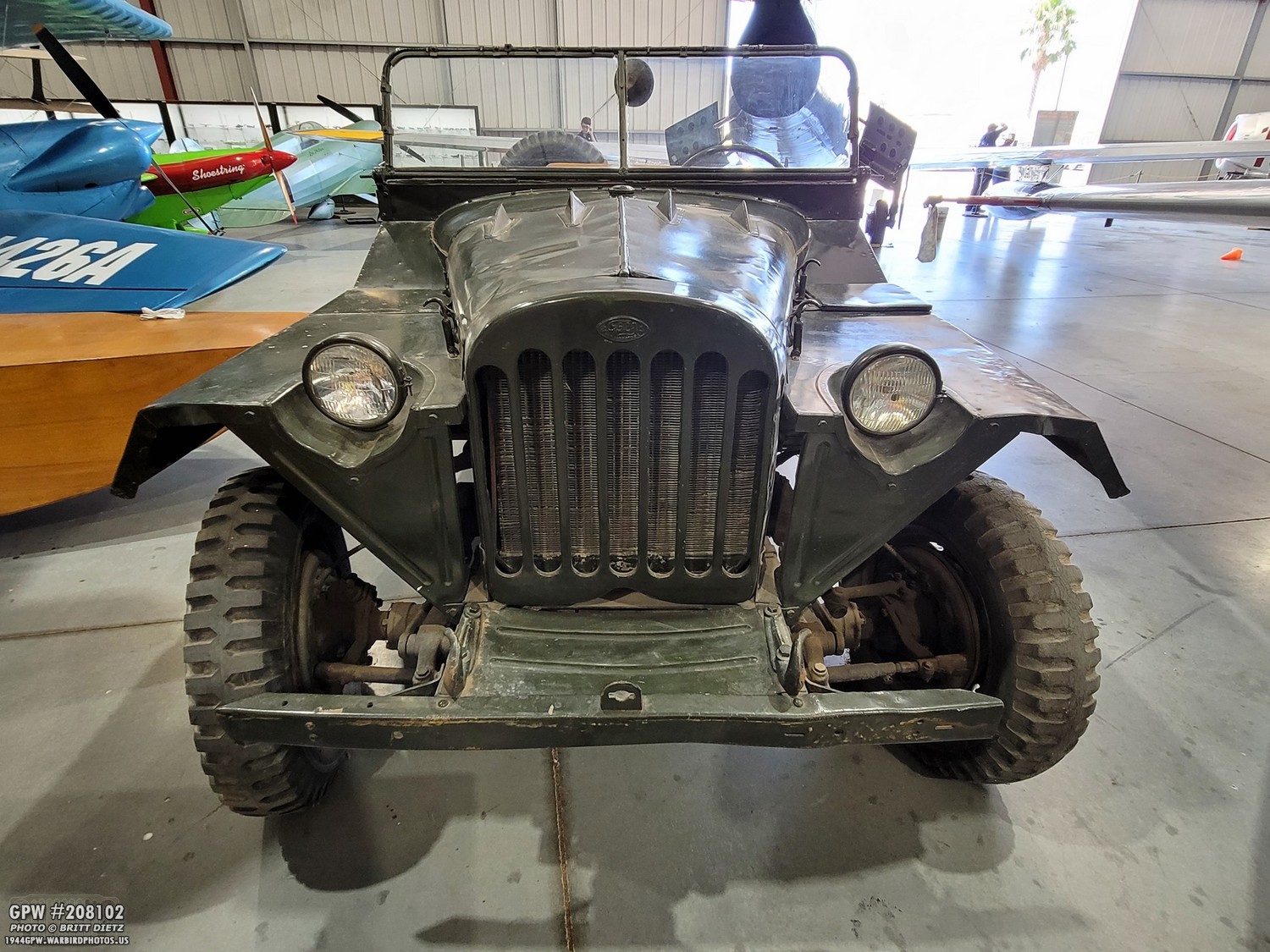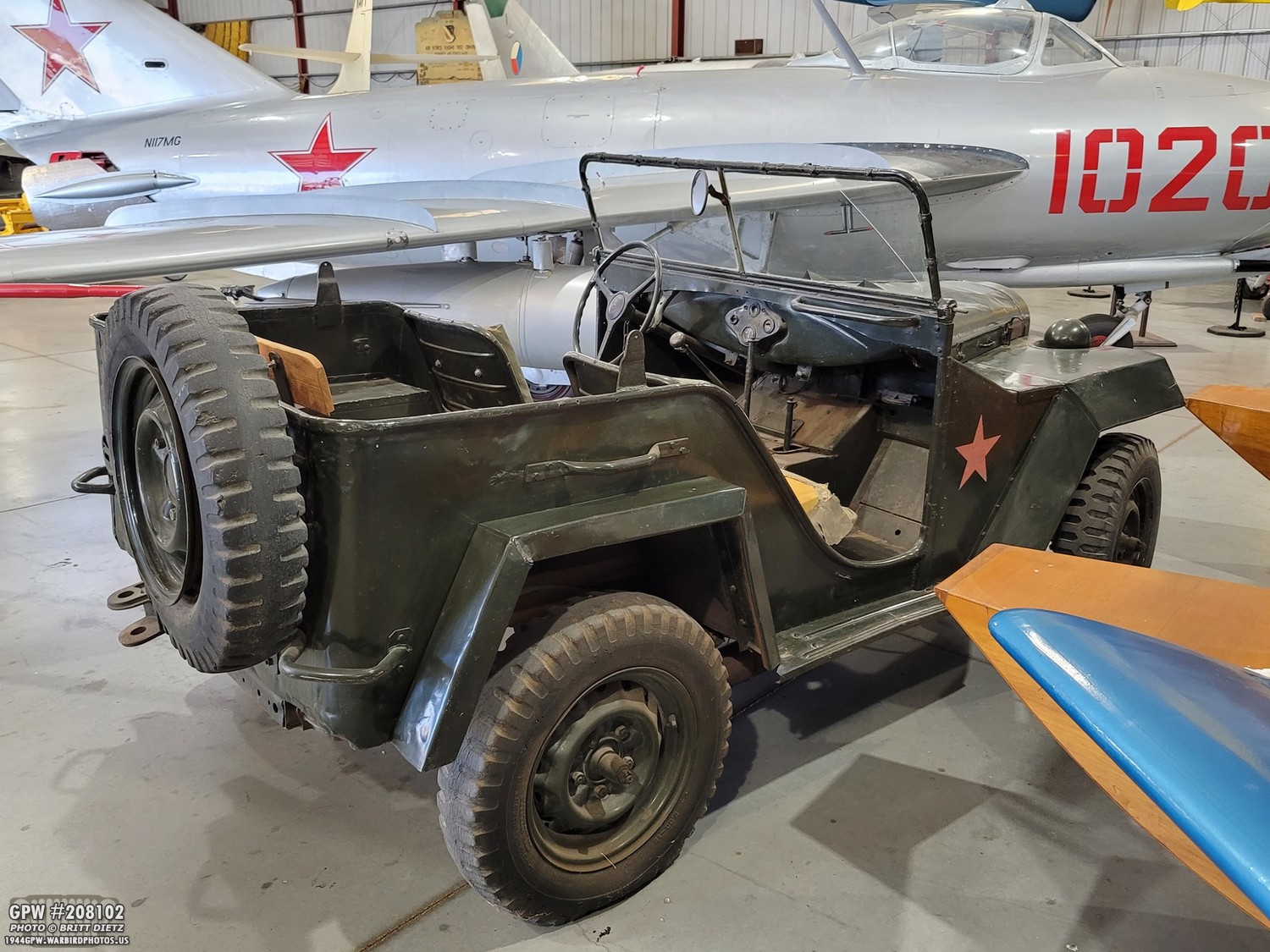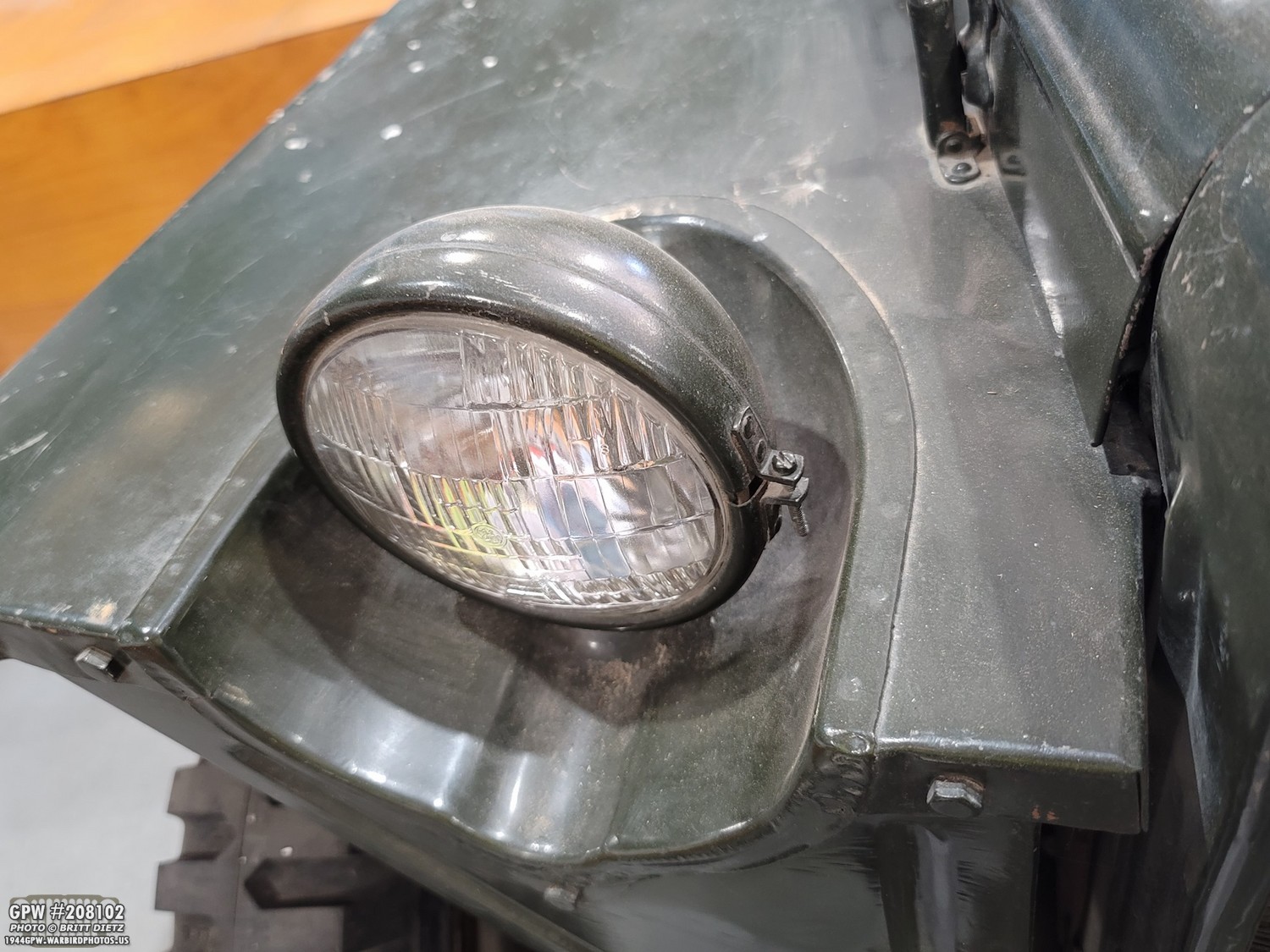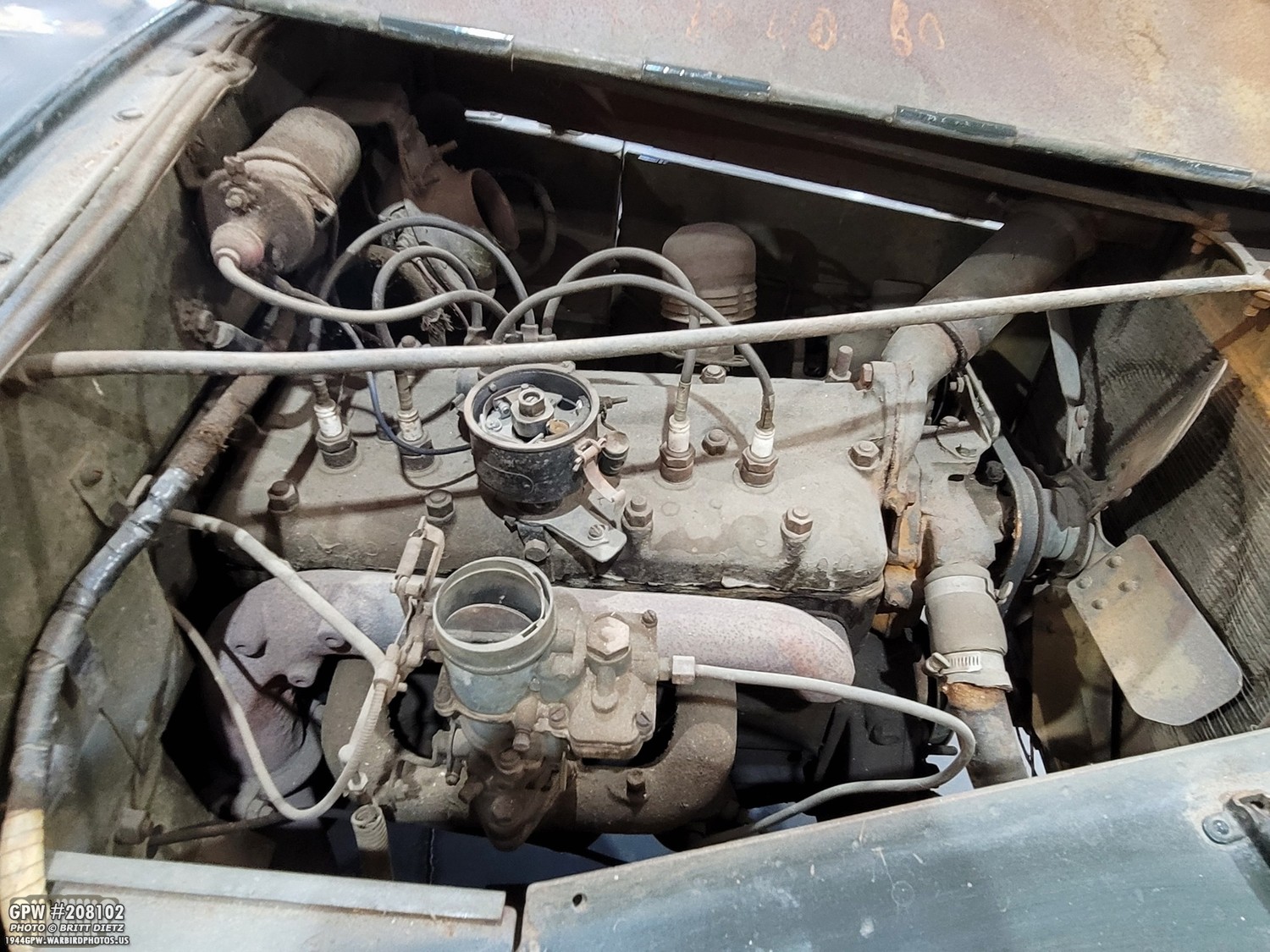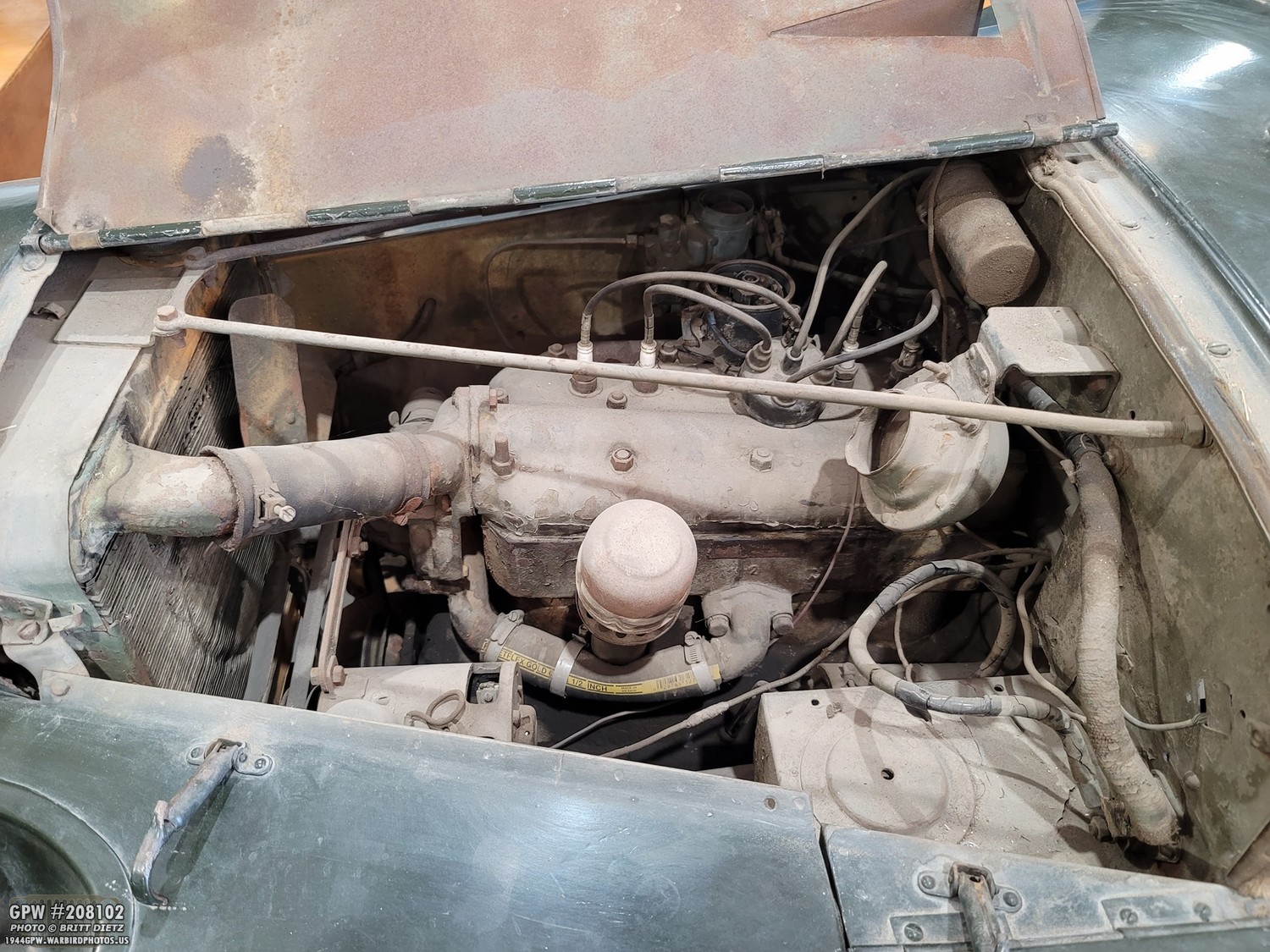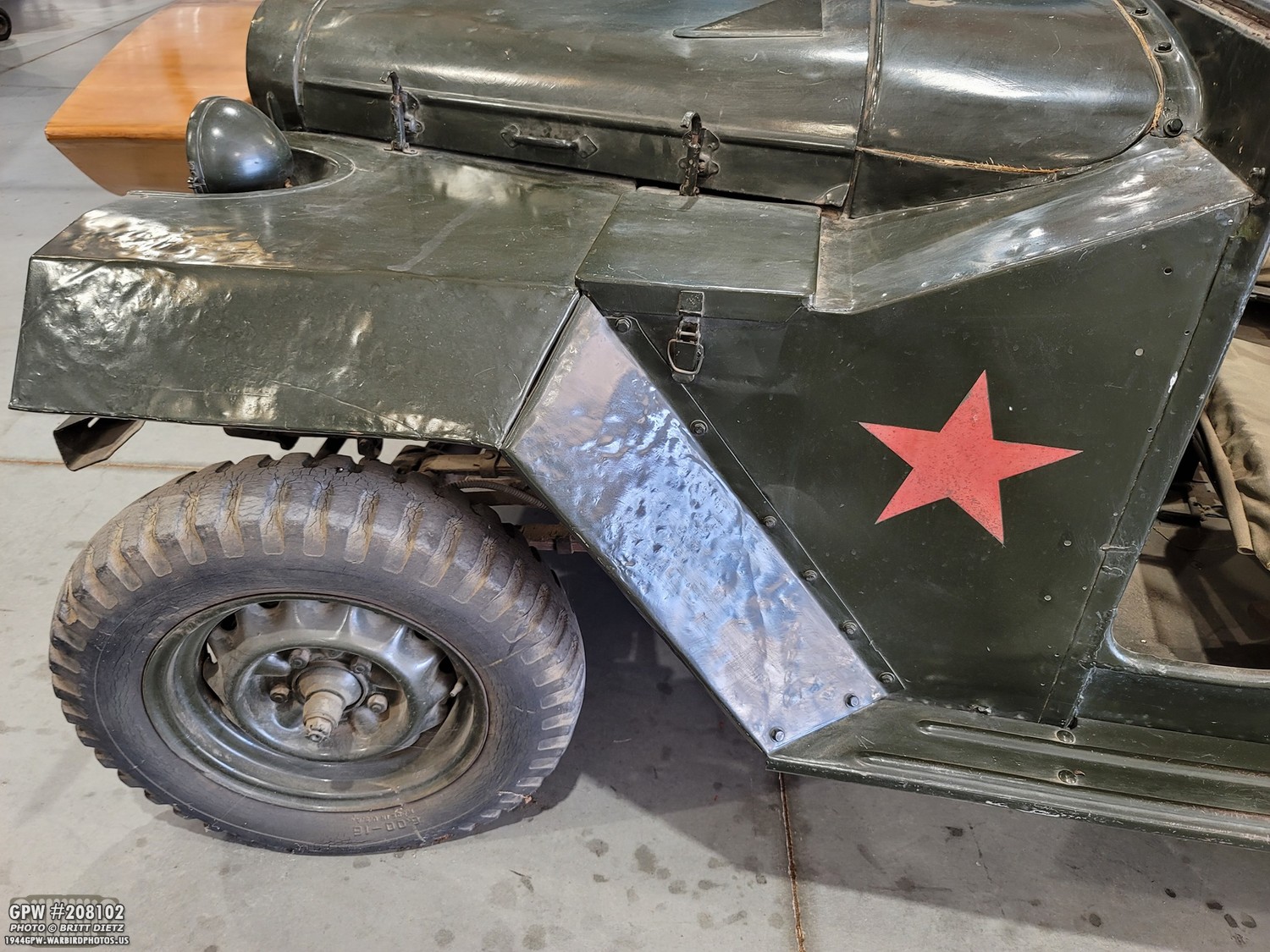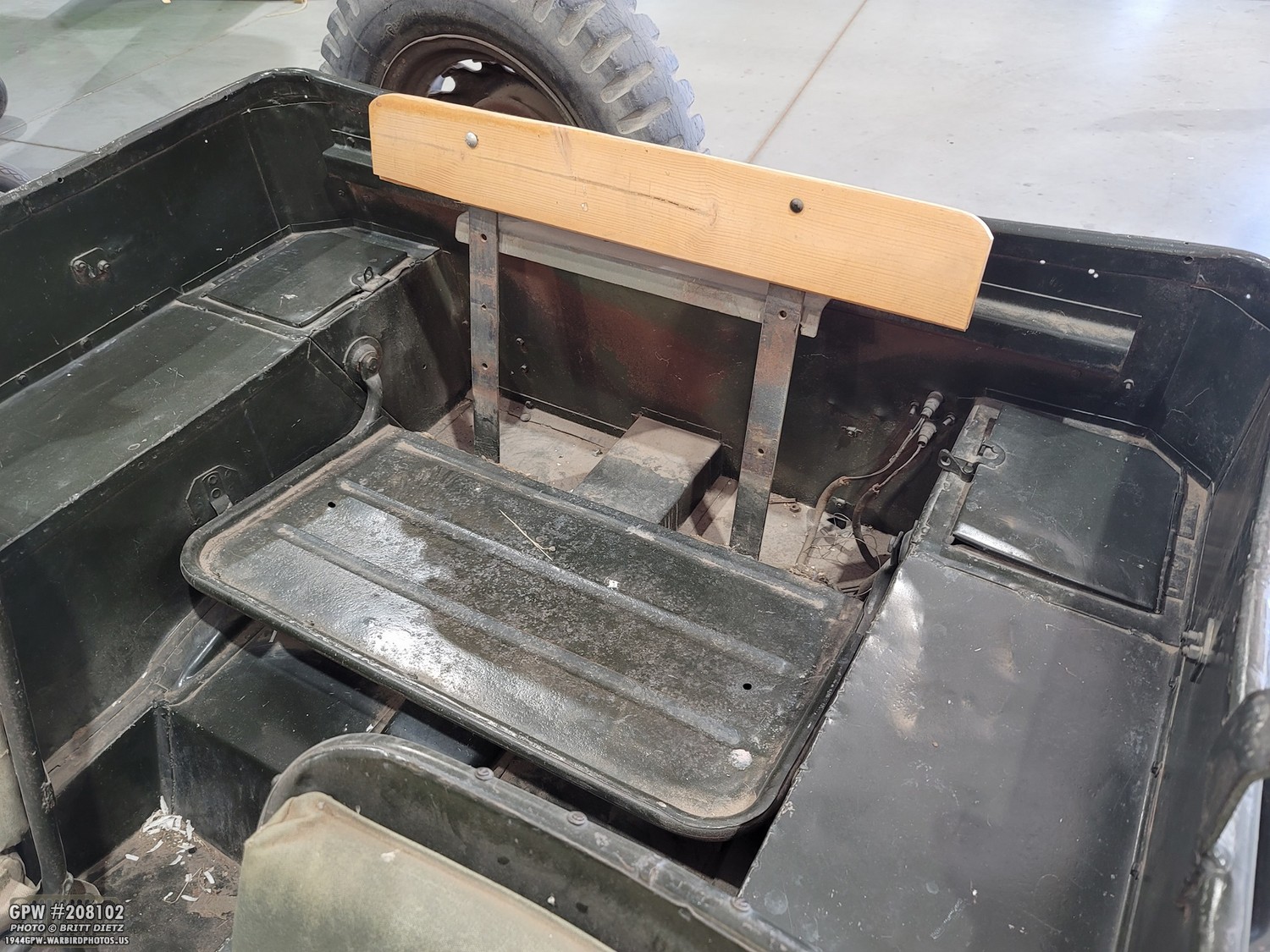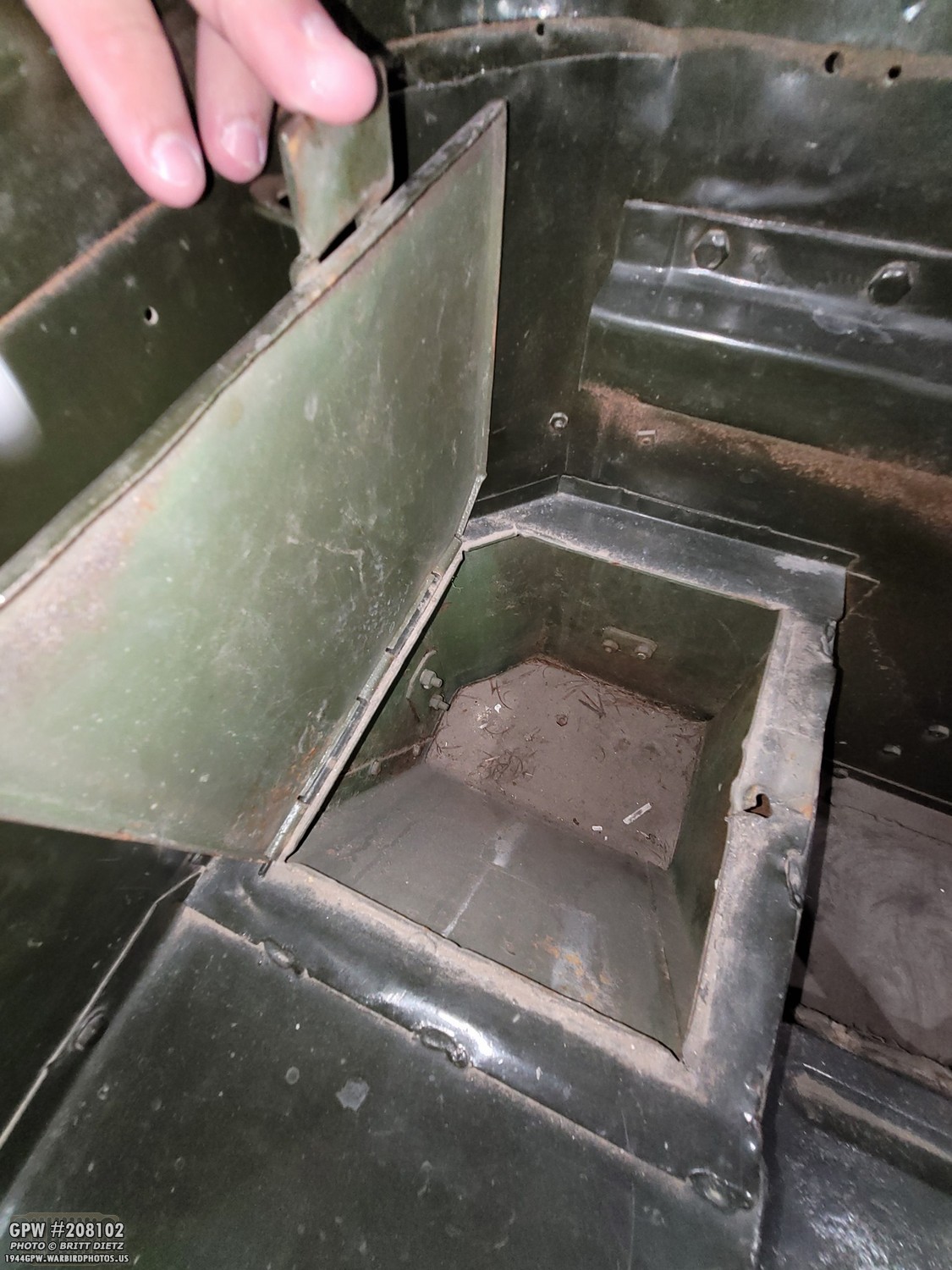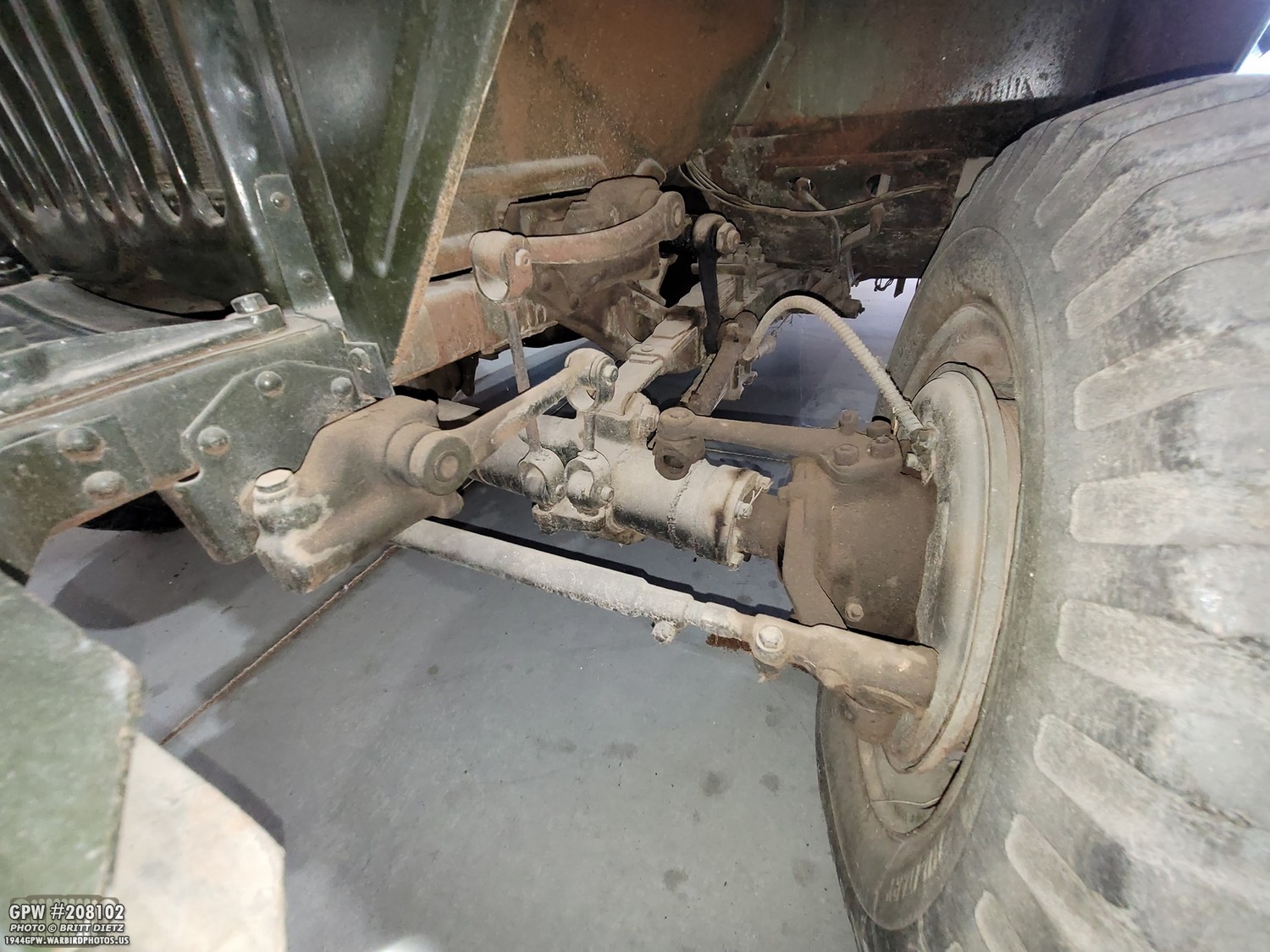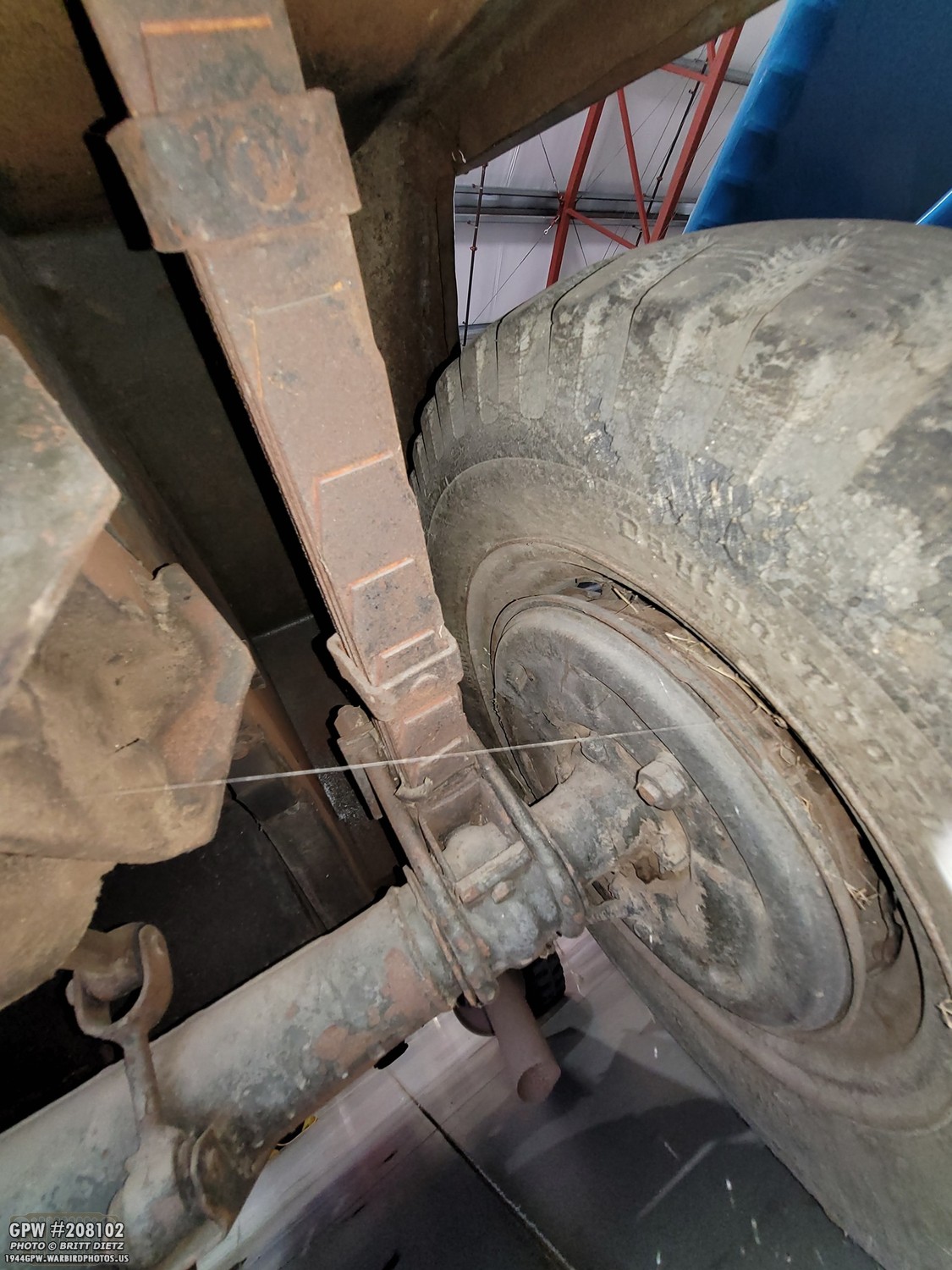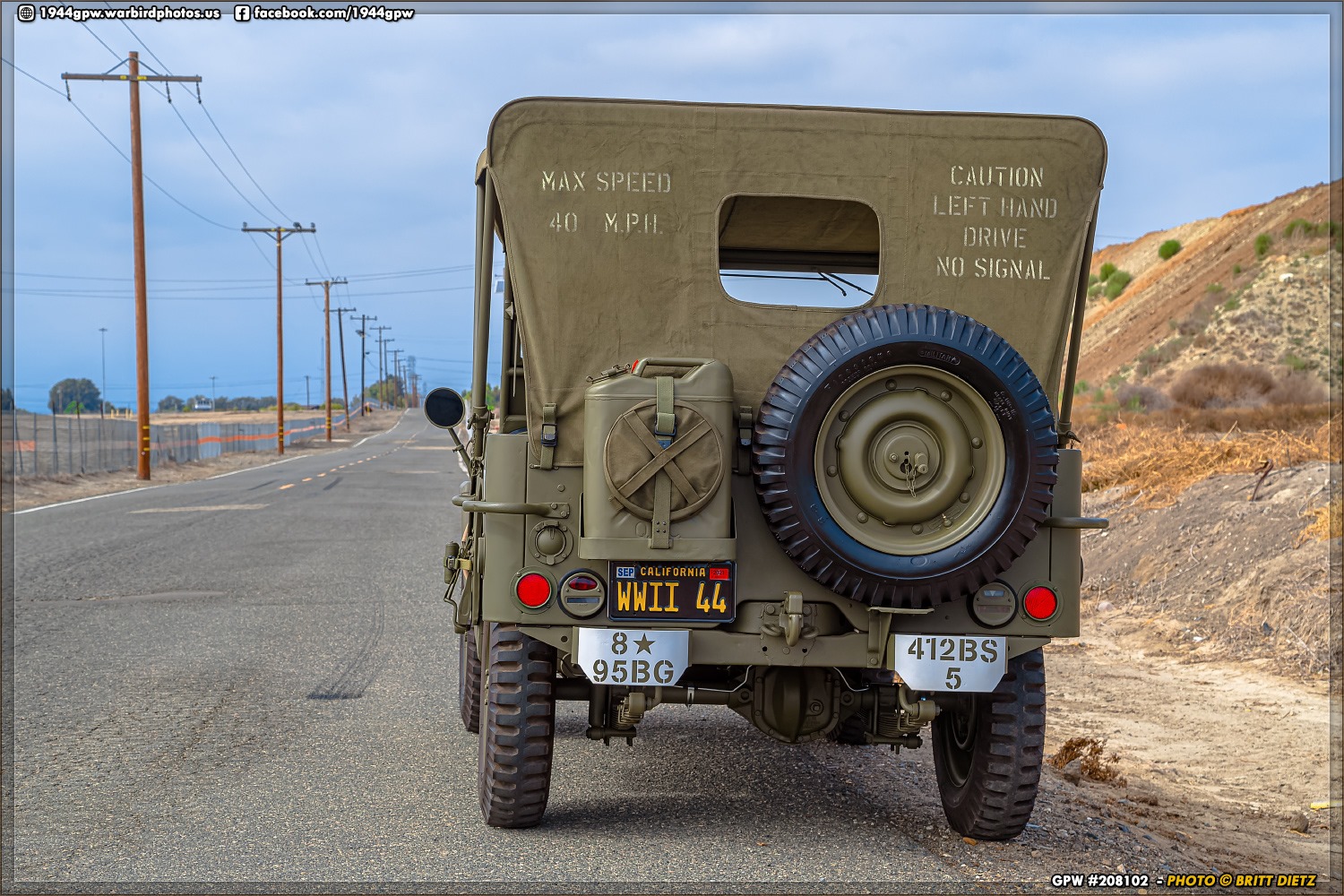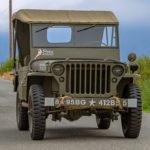 Photoshoot, Russian ‘Jeep Clone’, and Jerry Can Nozzle!
Photoshoot, Russian ‘Jeep Clone’, and Jerry Can Nozzle!
Another slower week since there wasn’t a lot to do on the Jeep work wise, but with a day of cooler cloudy weather, I was able to take the Jeep out to a new location and do a photoshoot in several spots with some great results! Also, I chronicle, through photos, a Russian ‘clone’ of the Jeep… a GAZ-67 located at the Planes of Fame Air Museum. Finally, I begin work on a very rusty Jerry Can nozzle.
War-torn Europe? Nope, just a secluded country spot in what’s otherwise a busy urban jungle in Southern California! Somewhere I’d been meaning to take the Jeep to do some nice photos now that she’s pretty much all done! Let’s jump in…
Naturally, when in California, you stop at In N Out. A good way to start the day’s journey!
I had discovered this really ‘out west’ looking countryside in the heart of Chino one day when coming home from the Planes of Fame Air Museum. I scoped out this very secluded road and found several spots that were perfect for photos without buildings, cars, people, and modern things. Be prepared… lots of Jeep photos incoming!
I even found a section with barbed wire, which really added to that wartime look.
Shooting lower to the ground, it doesn’t even look like it’s in crowded Southern California! And because the road is very secluded, in the three hours I was on this road shooting, I did not see another car nor person!
I tried to get some various angles on the Jeep to showcase all the different sides. Even up above the barbed wire.
I tried to incorporate the barbed wire as well to give it that wartime feel.
I ran a few of the photos through some photoshop filters I’ve made over the years to simulate a WW2 photo… I think they work pretty well!
And another one. The trick to make a convincing WW2 photo has to do with the depth of field, the blurred vignette, lower contrast, and the dust/scratches.
Even shooting black and white on the phone gave it a bit of a World War 2 look. Pretty cool.
A bit later on the road, I saw this spot where it was just a nice grass field. Almost like the old Windows XP wallpaper! Shooting lower to the ground makes for a really pleasing photo with the green field. I wish the dirt berm was wider, I would have driven up it to get a shot with just the grass in the background.
I believe it was a farmer’s field in the background. Nice and green, even though all the brush everywhere else is not during our major summer heat wave and droughts we have this time of the year. I should come back here in winter time to see everything green!
And that spot with the World War 2 photoshop filters applied. Still pretty convincing!
And another phone photo to show the same thing. Still looks like WW2 from just a Samsung phone! There’s an option on the newer Samsung phones where you can do your own filters with an existing photo. So you load a photo into the camera filters, and it will mimic the colors, contrast, etc of the photo you give it. I gave it a few actual WW2 photos, and it tried to mimic that look. This is the result.
Before moving on, a few shots of the rear. I wanted to make sure I shot all angles!
Moving more down the road, I saw this area with the old-fashioned-looking telephone poles all lined up down the road. With the barbed wire on the side, it really made things look great.
Since I wasn’t shooting much on this side, this large berm on the side of the road was nice to mask out the RV park in the distant background.
Next time I’ll have someone else take some video of it driving down these roads. But I think mission was very accomplished with the photos!
And these black and white ones really look great from the phone even without all the ‘old’ filters’.
While I wish I had a B-17 in the background at some airfield in Europe, I’ll certainly take these photos!
A bit later I found this really large tree as the sun started to poke through the clouds.
With the photoshop filters applied, it could easily be a Jeep at some airfield in Europe.
Pretty cool tree, out in the middle of the area. And with this shot, this is the end of the photoshoot photos. It was a lot of fun to get some nice car/building/modern-less photos! Thanks for sticking with all the shots! On to the next thing…
Last week I mentioned I picked up an additional correct WW2 jerry can nozzle on the right. It’s a bit… rusted.
I wanted to get to work on it and get started to see if I could clean it up as I hoped…
After just a little bit of wire wheeling, I was seeing a nice metal finish like the other restored one! It’s going to take a lot of work, but once it’s done, they should look very close!
The main problem is the screws (which are correct for a WW2 era production, post-war they went to rivets). They were rusted in place pretty tight. Soaking them in PB Blast didn’t seem to make much difference after a few days.
After using a torch, heating up one of the screws finally broke it free. I was able to carefully get the lock handle off without taking out the other screw, and then I was able to get the various rings and rubber spacer out.
It’s still going to be a lot of work, but at least I can get into the rusted areas now a lot easier to wire wheel. This weekend I’ll continue work on it until it’s all done!
The other screw in the lock handle was NOT moving at all. So, I had to leave it in there.
Moving on, I wanted to showcase a neat piece of history that many people might not know about. This is a Russian GAZ, a Willys Jeep ‘clone’, Russian style. I’d seen this at the Planes of Fame Air Museum over the years, but finally got some time to go check it out and get an up-close look at how close it is to the Jeep we all know. This, in particular, is a GAZ-67 model, which this particular one was produced post-war (I’ll get to how I know later). It’s basically the same as the wartime model with some minor changes. The GAZ-67 was first produced in 1943. The original GAZ was modelled after the very first Bantam Jeeps (very early prototype Jeeps). This version, the 67, is more closely modelled to the MB and GPW Jeeps. You’re going to see a lot of simulartities.
Another look at the GAZ-67 from the rear corner. You can see the overall similar shape, with the cutout door, large wheelhouse, body tub handles, rear-mounted tire, etc.
And the other corner. I believe much of this is original (with some added things). The Jeep is currently in the Jet/Racer hangar at the museum.
From the rear, you can see what even appears to be copied footman loops. The stoplight is an American Jeep blackout driver’s side stoplight, which I believe was put on this just to have something. The pintle hook swivels. I’m not sure if that’s complete or missing parts.
Here’s a look at the rear passenger side with very similar body tub handles. Just like the Jeep, there’s a side handle and a corner handle. The side handle is a bit further back than your GPW or MB.
The biggest differences are found in the front of the GAZ. The hood is not a single piece but two pieces, like Model As (which much of the first versions of the GAZs were initially modelled after). The headlights, instead of being in a large grill, are on the fenders. There are front tool boxes on the fenders. It does have frame horns and a bumper in front like the Jeep. There’s actually a second fuel tank just in front of the windshield, which you can see the fill cap.
Here’s a look inside the GAZ. Similar layout as a Jeep… two seats in front, a large bench seat in back. Tool boxes in each of the wheel houses.
Looking at the front grill, this is the one give-away that it’s a post-war produced GAZ-67. Wartime GAZ-67s had all the slots for the grill the same height and the shape is an overall box rather than curved at the top.
One thing I found humorous is the logo on the grill… look familiar to a certain GPW style?
Even though the headlights are in a different location, they are very close to the Jeep style buckets.
There are hood catches/latches, but a much different style. Most like the model As and other cars of the 1930s.
And here you can see how the hood opens. The hinge is in the center, so you can open both sides.
Looking inside the engine bay, we see a very similar but different engine. It’s like deja-vu, but something seems off. Here you can see the coil, spark plugs, distributor, manifolds, carburetor, water pump, fan, etc.
Even the carburetor looks similar (but off) to a Carter WO carb. I am unsure if this carb is original to a GAZ-67, but looks unlike anything I’ve seen on Jeeps.
Looking at the fan, it has six blades instead of four. It’s basically a reverse layout from a Jeep.
Looking at the otherside, we have a no trumpet horn, a generator, and starter, and what I think is either a fuel pump or oil pump.
Looking at the fender-mounted toolbox, here’s how they look. Not much space, but you could carry some tools.
The windshield is very similar to the Jeep, but without the base so it’s much shorter. It rotates, but from a hinge rather than arms that pivot. The glass is split and there are studs at the top to hold a canvas top.
Looking at the front fenders (lots of Russian military history in those warped fenders), it’s a similar design but multiple pieces instead of one single fender.
And the rear fender, which Jeeps don’t have. There’s also a large step below the door cutouts.
I’m unsure how an original rear seat should look for one of these, but you can see that the seat pan rotates up. Also interesting to note is the stoplight wires in the vehicle, not under the tub. On either side of the wheelhouse are the rear toolboxes.
Under the dash on the driver’s side, you can see a series of pedals. I know it’s a clutch, brake, and gas system, but I’m not sure what is what. Also looks like a Jeep style headlight dimmer switch to the left.
The dash is a lot smaller than a Jeep, without a glove box. The shifters (the GAZ-67 has the same 4 speed transmission, 2 speed transfer case setup as a Jeep) are in the middle, but set up a bit differently. What was interesting to see was the top to a Jeep fuel filter (no bowl) on the right under the dash.
Again, I’m not sure how an original GAZ-67 dash gauge setup should look, but here there’s a Jeep style ignition switch, a Jeep Ammeter, and some other gauge to the right. I’d be curious to see/know what it should actually look like. There are extra switches under the dash. I’m not sure what those are for, possibly lights?
One interesting thing I saw was that the tub is lower than the driveshaft, so in the middle of the Jeep the tub has a channel where the driveshaft goes through!
Here’s a look inside one of the rear toolboxes. Similar to a Jeep.
Taking a look underneath the driver’s side front fender, we can see the interesting steering system. I’ve read that the steering setup for these was not very reliable and could easily break. Same principle as a Jeep (and most vehicles of the time).
What was interesting to see was almost a carbon copy of the Jeep angled leaf springs, but they are mounted on TOP of the axle with the U bolts pushed upwards!
The rear axle differential is also sideways, which makes it look unsettlingly off!
Looking under the main tub towards the front, you can see various cables for all the pedals and controls for the GAZ-67. I’d be curious to really learn how this system worked.
Looking to the rear you can see the brake lines ripped) and the drive shaft, which appears to be actually enclosed with the rear differential.
So there’s a quick look at this GAZ-67 and the similarities to the Bantam/MB/GPW designs of WW2. Parked right next to a MiG-17, which was probably a common sight into the Korean War.
And that’s a wrap with this week’s update! Two photo tours, one from my Jeep in the new spot and the Planes of Fame Air Museum’s Russian GAZ-67. This weekend I’ll be working on that Jerry Can nozzle. Hopefully, I’ll have some more things to do Jeep-wise that I can share soon as well!
Till the next update…


